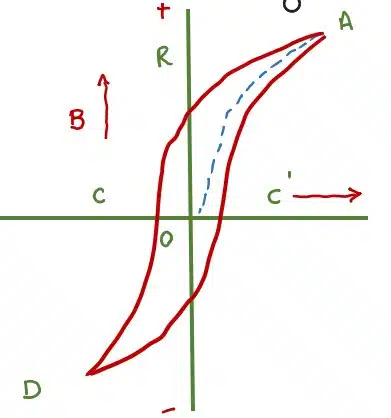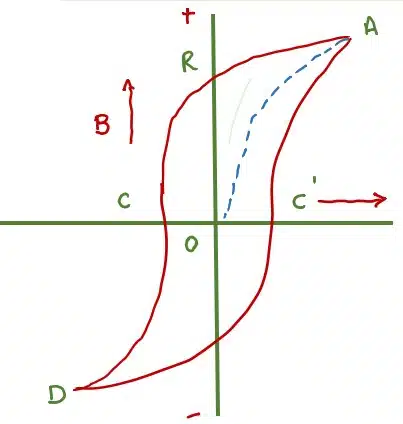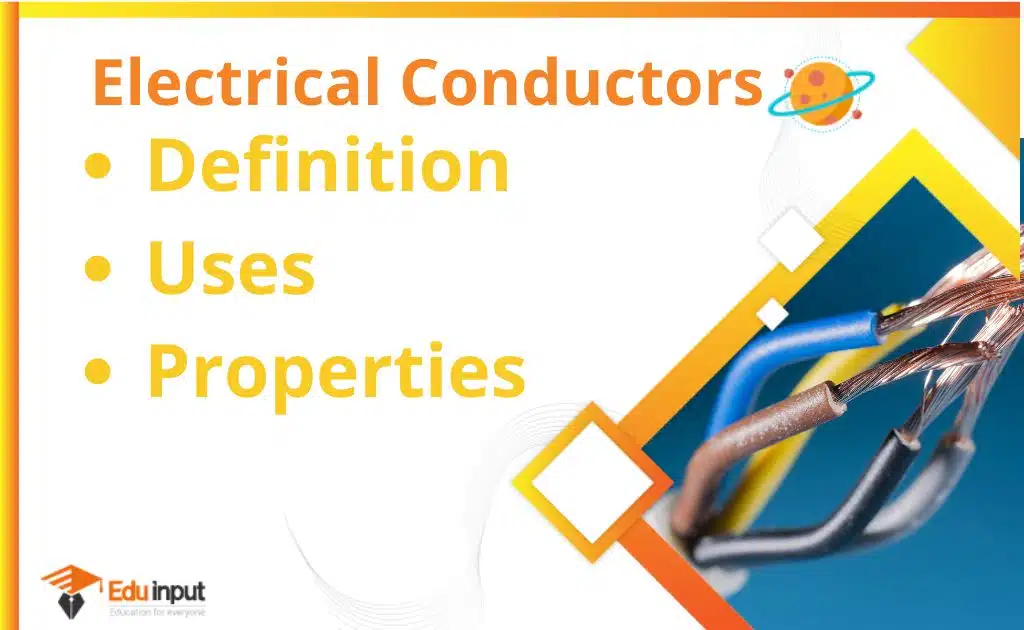Hysteresis loop-Magnetic Hysteresis
The hysteresis loop shows the relationship between the magnetic flux density and the magnetizing field strength. The ferromagnetic material is investigated by making it magnetized and demagnetized when the ferromagnetic specimen is placed inside a solenoid through which an alternating current is passed.
Magnetic Hysteresis
When the alternating electric current is at its positive peak, it fully magnetizes the specimen in one direction and when the current is at its negative peak, it fully magnetizes it in opposite direction.
Thus as the alternating current changes from its positive peak value to its negative peak value and then to its positive peak value, the specimen undergoes a complete cycle of magnetization.
The flux density versus the magnetization of the specimen for the various values of magnetizing current of the solenoid is plotted by a CRO.
What is the Hysteresis loop?
The portion OA of the curve is obtained when the magnetizing current I increase and AR is the portion when the current is decreased.


It is important to note that the value of electric flux density for any value of the current is always greater when the current is decreasing than when it is increasing i.e. the magnetism lags behind the magnetizing current. This phenomenon is known as hysteresis.
Saturation in Hysteresis loop
The magnetic flux density increases from zero and reaches the maximum value. At this stage, the specimen is said to be magnetically saturated.
Remanence or Retantivity in hysteresis loop
When the current is reduced to zero, the material still remains strongly magnetized, this is represented by the point R on the curve.
It is due to the tendency of the domains to stay partly in line, once they have been aligned.
Coercivity in Hysteresis loop
To demagnetize a material completely, the current is reversed and then increased in the opposite direction to reduce the magnetization to zero.
This current is known as coercive current and is represented by C on the curve.
The coercivity of steel is much more than that of iron, this means that more current is needed to demagnetize a steel sample than an iron sample. The curve never passes through the origin but forms a closed loop ACDCA’ and this is called the hysteresis loop.
Area of the Hysteresis loop:
The area of the loop is the measure of the energy needed to magnetize and demagnetize each cycle. This energy is used to overcome the internal friction of the domains. This work, like all other works against friction, is dissipated as heat. It is called hysteresis loss
Hard magnetic materials like steel are not easy to magnetize and demagnetize and they require more energy, so they have a large loop area as compared to soft magnetic substances like soft iron. This means that the energy dissipated per cycle for iron is less than for steel.
Related FAQs
Why is it called a hysteresis loop?
On a graph called the Hysteresis Loop, we display the hysteresis of a material. A hysteresis loop may also be used to describe the connection between the induced magnetic flux density and the external magnetizing force.
What is hysteresis in simple terms?
Hysteresis, as a generic word, refers to a delay between input and output in a system after a direction shift. Hysteresis is a property of magnetic materials that causes the generated magnetism to follow the applied signal with a delay if a fluctuating magnetizing signal is supplied.
What is a hysteresis example?
The delayed consequences of unemployment, in which the unemployment rate might keep increasing even after the economy has started to recover, are a typical illustration of hysteresis. The percentage of persons in an economy who are seeking work but are unable to find any is known as the current unemployment rate.
Why is hysteresis used?
Although it is undesirable in some circuits, hysteresis in analog circuits is useful for managing switching in circuits with saturation (i.e., transistors). Hysteresis, for instance, can be purposefully added to a comparator circuit because it can be used to control the output waveform’s duty cycle.






Leave a Reply